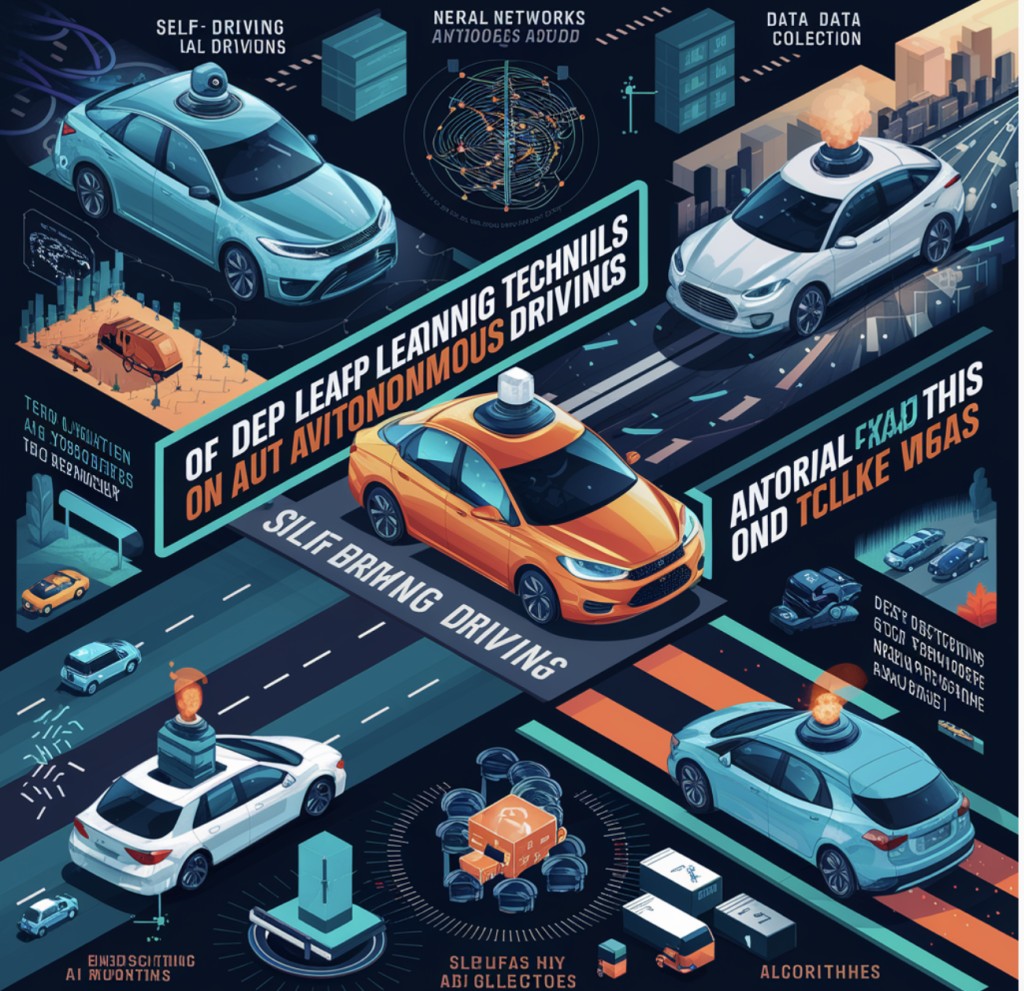Over the past decade, advancements in deep learning and artificial intelligence have driven significant strides in self-driving vehicle technology. These technologies have revolutionized computer vision, robotics, and natural language processing and played a pivotal role in the autonomous driving revolution. From basic driver assistance to fully autonomous vehicles(AVs) capable of navigating without human intervention, the progression is evident through the SAE Levels of vehicle automation. Despite most scenarios being solvable with traditional methods, unresolved corner cases highlight the necessity for AI-driven solutions. With sensors enabling perception and communication technologies like 5G aiding extended perception, AVs promise safer, more efficient transportation, albeit with challenges like sensor reliability and integration.
Deep Learning-based Decision-Making Architectures for Self-Driving Cars:
Self-driving cars rely on complex decision-making systems that analyze data from various sensors to navigate autonomously. These systems can be modular, with distinct components for perception, path planning, behavior arbitration, and motion control, each designed using AI or classical methods. Alternatively, an End2End learning approach directly maps sensory data to control outputs. Safety monitors ensure the reliability of each module. Understanding the environment, planning paths, behavior arbitration, and motion control are essential tasks. Classical methodologies for these tasks are also explored. Deep learning and AI technologies play crucial roles in both modular and End2End systems for autonomous driving.
Overview of Deep Learning Technologies:
Deep learning plays an important role in autonomous driving, with CNNs being crucial for processing spatial information like images, replacing traditional handcrafted features with learned representations. Mimicking aspects of the mammalian visual cortex, CNNs efficiently detect image features, aiding in object recognition. RNNs excel in processing temporal sequences such as video streams or text. Unlike conventional networks, RNNs possess a time-dependent feedback loop, allowing them to capture temporal dependencies. Long Short-Term Memory (LSTM) networks mitigate the vanishing gradient problem encountered in basic RNNs, enabling the modeling of longer-term dependencies in sequences.
DRL presents a paradigm for autonomous driving, employing the Partially Observable Markov Decision Process formalism. In this framework, an agent, like a self-driving car, navigates an environment based on observed sensory data, taking actions to maximize cumulative future rewards. DRL models, such as Deep Q-Networks (DQN), estimate optimal action policies by training neural networks to approximate the maximum expected future rewards. Extensions to the base DQN algorithm, like Double Q Learning and Prioritized replay, enhance its performance, offering promising avenues for autonomous driving applications. However, challenges remain in adapting DRL to real-world driving conditions.
Deep Learning for Driving Scene Perception and Localization:
Autonomous vehicles rely on perceiving their surroundings to navigate safely. The methods involve deep learning, particularly for object detection, recognition, and scene understanding. The debate between camera and LiDAR sensors persists, each having advantages and limitations. While LiDAR offers precise 3D data but is costly and susceptible to weather, cameras are cost-efficient but lack depth perception. Researchers aim to bridge this gap by generating LiDAR-like point clouds from visual depth estimation. Deep learning architectures are employed for object detection, semantic segmentation, and localization, leveraging camera and LiDAR data for comprehensive scene understanding essential for autonomous driving.
Safety of Deep Learning in Autonomous Driving:
Ensuring the safety of autonomous driving systems that utilize deep learning is a multifaceted challenge. Safety hinges on understanding potential failures, the system’s context and defining safe behavior. Different definitions of safety exist, from risk reduction to minimizing harm from unwanted outcomes. Existing standards like ISO 26262 provide a framework, but adapting them for deep learning is complex. Deep learning introduces unique hazards and uncertainties, requiring new fault detection and mitigation approaches. While machine learning techniques are becoming more reliable, comprehensive safety assurance for deep learning in safety-critical systems remains an ongoing endeavor, necessitating the development of tailored safety standards.
Conclusion:
In the realm of autonomous driving, several open challenges persist, all of which can be addressed with the help of Deep Learning and AI:
Perception: Deep learning enhances object detection and recognition accuracy, but future systems should aim for increased detail recognition and improved camera and LiDAR data integration.
Short- to middle-term reasoning: AI and deep learning are crucial for path planning, particularly in local trajectory estimation and planning.
Availability of training data: Deep learning’s efficacy relies heavily on data quality, with simulation environments bridging the gap between real-world data scarcity and training requirements.
Learning corner cases: Deep learning algorithms need enhanced generalization power to handle rare driving scenarios, necessitating the development of one-shot and low-shot learning methods.
Learning-based control methods: Deep learning can adaptively learn control parameters, improving autonomous vehicle performance by approximating true system models.
Functional safety: Integrating deep learning into safety-critical systems poses challenges, particularly in meeting existing safety standards and ensuring the explainability, stability, and robustness of neural networks.
Real-time computing and communication: Meeting real-time processing requirements for large sensor data volumes and high-speed communication lines requires advances in hardware and communication networks.
The post Deep Learning Techniques for Autonomous Driving: An Overview appeared first on MarkTechPost.
Source: Read MoreÂ

